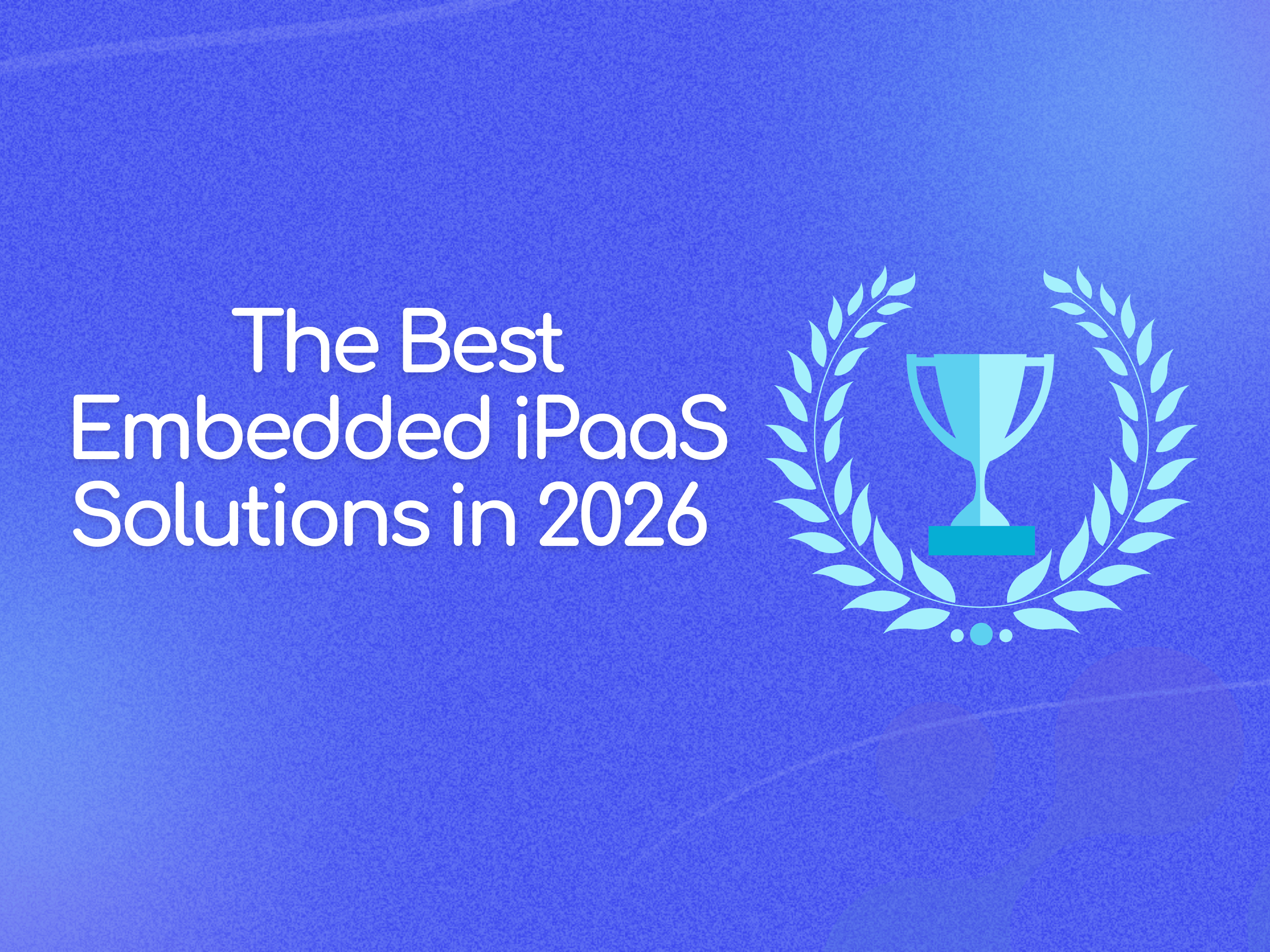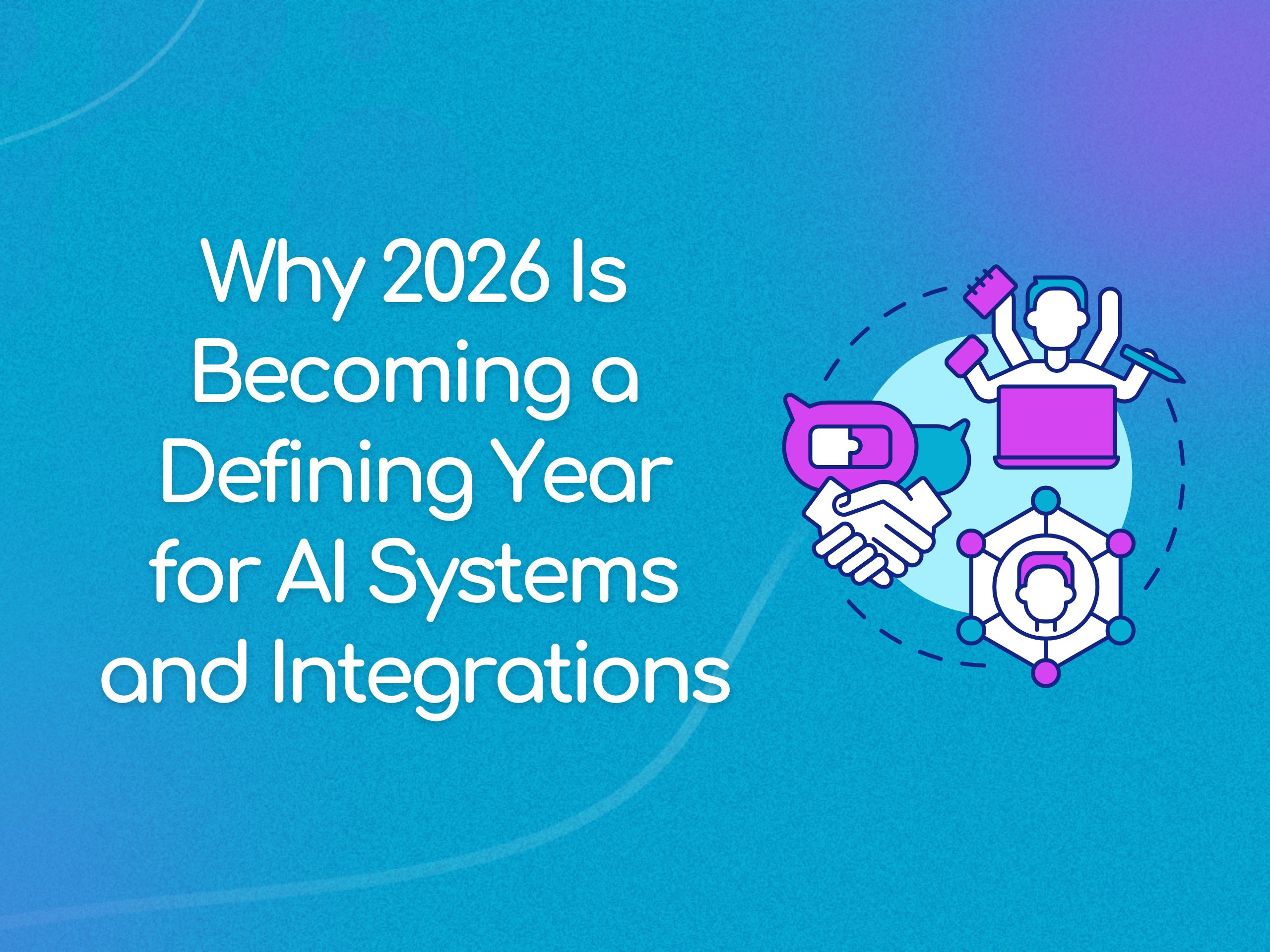Why B2B SaaS Needs Newer Alternatives to Embedded iPaaS Systems

The Problem for B2B SaaS: Addressing Modern Integration Needs
Software that is built specifically to serve other SaaS organizations (B2B SaaS) requires a complex infrastructure in order to provide integrations that meet the needs of business users.
Most SaaS companies already customize and configure their products to align with their customers' specific needs. But many companies forget that customers also expect their integrations to be customizable and easy to use.
But in order to fully meet the needs of customers today, B2B SaaS companies must build flexible integrations in addition to launching products and features for their core business.
Why it’s hard to do B2B SaaS Integrations well
Integrations for modern B2B SaaS are often expected to be muti-purpose and high volume. This creates several challenges:
- A Lot of engineering time is required to meet all customer integration needs.
- Crafting unique integration configurations or setups for different customers is complex and time consuming.
- Developers become responsible for standing up the infrastructure, maintenance, and integration customer support.
- Creating an exceptional user experience is difficult and time consuming.
These challenges point to the need for a lot of dedicated technical resources to facilitate integration development, maintenance and support. And they emphasize the importance of having a robust integration infrastructure that can handle the complexities of SaaS integrations.
B2B SaaS organizations, in the past, faced a lack of dependable options when seeking to outsource the infrastructure and development of complex, high-volume integrations.
The Emergence of Embedded iPaaS Systems
Embedded iPaaS (Integration Platform as a Service) systems are a SaaS product that emerged in order to help solve B2B integration challenges.
Originally, iPaaS solutions were designed for IT teams, developers, or non-technical teams to create and manage internal integrations for organizations. Many of these tools included no-code or low-code builders with pre-built workflows.
Then, Embedded iPaaS entered the market to help B2B SaaS organizations build and deploy integrations to their customers faster.
All in all, Embedded iPaaS systems aim to address the following pain points:
- Managing a high volume of integration requests takes up a lot of engineering time.
- Building the infrastructure for integrations is time consuming.
- Authentication isn’t standard across systems and can be complex.
- UX for integrations has traditionally not been great.
They attempt to address these pain points by doing the following:
- Handling the infrastructure for integrations including hosting and logging.
- Offering pre-built connectors to different SaaS systems for authentication.
- Empowering non-technical teams to take on integration builds and maintenance with no-code or low-code tools and pre-built workflows.
- Some, also offer an end-user facing app marketplace experience where users can discover, install and manage integrations.
Many embedded iPaaS systems allow SaaS companies to get integrations to market faster.
They also allow technical teams to offload some of the maintenance, infrastructure and support work required for integrations. This frees up time for them to focus on their core product.
B2B Integration Challenges Persist
Embedded iPaaS solutions were a step in the right direction. But when we look at the complexity, iteration, and usage volume associated with supporting user-facing integrations for B2B users, low-code or no-code workflow tools are not equipped to handle these demands.
Building integrations that are business critical requires flexibility and support. The integration needs of B2B SaaS users are dynamic and APIs are always changing and updating.
This makes pre-built workflows vulnerable to becoming outdated — putting your integration functionality at risk if a third-party fails to maintain them. While iPaaS providers typically update their connectors eventually, there’s often a lag, and some updates introduce new bugs.
Expecting pre-built connectors and workflow builders to meet an organization’s long term integration needs doesn’t align with a scalable integration strategy designed to meet the dynamic needs of B2B SaaS users.
It also becomes challenging to avoid vendor lock-in and predict costs if an organization becomes dependent on using the pre-built workflows of iPaaS systems to offer the majority of their integrations.
Especially if they’re looking for a system to scale with them. Additionally, lack of centralization and the need to learn how to code around a low-code or no-code tool when more customization is needed can still result in engineers spending a lot of time on maintenance and customer support.
Newer Alternatives to Traditional Embedded iPaaS Systems
Code-first integration platforms, like Pandium, have emerged to address the need for rapidly launching user-facing integrations without compromising flexibility or end-user experience.
Like traditional Embedded iPaaS systems, they have pre-built authentication to different systems, and also handle the infrastructure required to build, manage, and support integrations. However, Pandium’s platform allows technical teams to leverage all the power of building native integrations with code.
Being a language-agnostic platform, developers can program integrations using their existing tools and write business logic in any common language, including Python, JavaScript, Java, Ruby, and Go.
A junior developer can code business logic for an integration once and connect their repository to Pandium to launch and automate releases and versioning.
This same integration business logic can be reused to launch different versions of the integration to other users via Pandium’s Integration Hub, either by technical or non-technical teams.
Using Pandium, organizations can leverage the full flexibility of APIs (public or private) to build native integrations – without the heavy lift. They also get total ownership over the code they write, releasing some of the vendor lock-in risk often associated with no-code or low-code tools.
Even if an organization doesn't have an API available, Pandium can use Secure File Transfer Protocol (SFTP) or direct database connections to build integrations.
In the end, Pandium can reduce the development resources needed for building, maintaining, and supporting native integrations by up to 70%.
That’s all the flexibility of in-house development at a reduced cost, without needing extra hires or building the infrastructure and UI for these integrations.
Pandium also offers an optional white-labeled app marketplace UI. This feature allows users to discover, install, configure integrations, view logs, and schedule syncs. This means technical and customer-facing teams can also spend less time on support and onboarding for integrations.
Conclusion
Like traditional SaaS products and features, building, managing, and supporting B2B integrations requires the flexibility and agility that comes with code. Pandium is a new type of integration platform built to scale with B2B SaaS organizations.
From the Blog

Best Embedded iPaaS Solutions in 2026: Complete Guide

